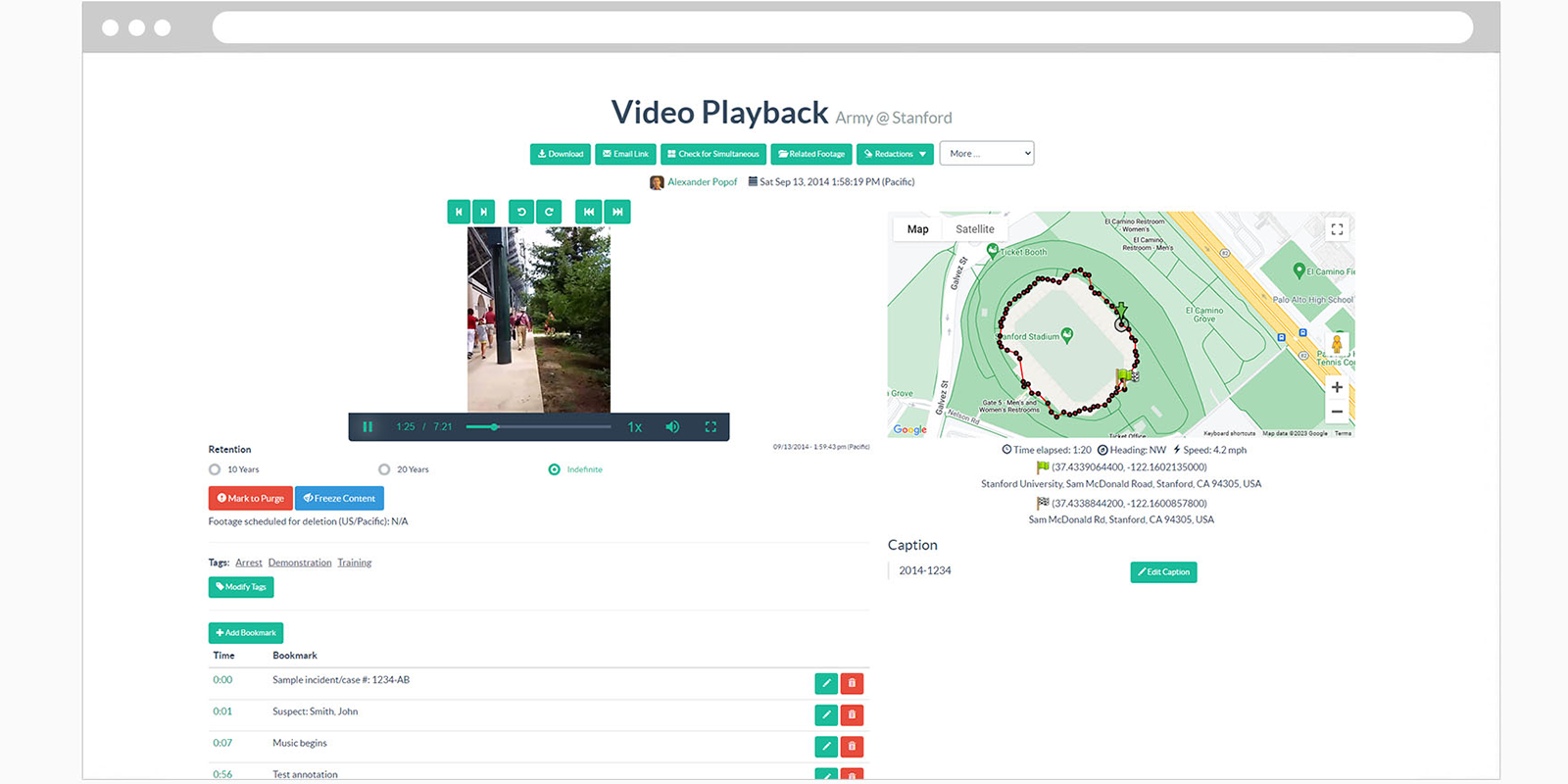Simplify Your Agency’s Evidence Management
Securely store and access live video streams and GPS locations from officers’ smartphone-based body cameras. Our Digital Evidence Management System (DEMS) automatically uploads videos, photos and audio directly to our cloud-based platform for later review. Streamline and simplify your agency’s evidence management with robust editing, redaction and search tools.
Manage fast-growing files effectively in the cloud
Collect, store, recall and review your rapidly expanding influx of digital files with greater efficiency, security and adherence to relevant laws and regulations.
Enhance situational awareness and improve officer safety
Authorized users can access real-time video and audio feeds while also viewing the position and status of field personnel.
Support better, more just outcomes for your community
By providing an accurate account of events, both officers and community members are assured of an objective view throughout the course of an investigation.
Solution Overview
Synchronized Incident Viewing
View multiple videos on one screen with simultaneous playback, providing frame-by-frame control to extract important details. Synchronize videos to access a complete incident view to evaluate every recorded angle of an incident.
CJIS-Compliant System
Fully Criminal Justice Information Services (CJIS) complaint, Versaterm Visual Labs DEMS enables authorized personnel to find, tag and use stored footage in a secure environment. All video, audio and photo captured evidence are automatically uploaded to the cloud through a secure connection to the Versaterm Digital Evidence Management System.
Simplified Redaction
Automatically track and blur faces and objects while easily bleeping, muting or disguising audio to protect identities as required. This powerful, innovative tool reduces agency redaction time and provides the ability to easily download and share redacted footage and evidence.
Advanced Analytics
Full access to metadata, location-based data, heatmaps and geofencing supports reporting and alerts. These features also provide insights that support thorough investigations. Easily search, tag and annotate footage with customized retention schedules and set robust permissions and audit trails to ensure proper chain of command and access.
Easily Manage Your Footage and Recordings
Versaterm Visual Labs DEMS simplifies finding what you need and protecting the privacy of community members with robust editing, redaction and search tools.







